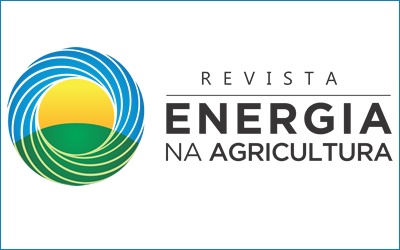CHARACTERISTICS OF GRAIN SORGHUM REGROWTH FOR FORAGE USE IN INTEGRATED SYSTEMS
DOI:
https://doi.org/10.17224/EnergAgric.2023v38n3p75-79Resumo
CHARACTERISTICS OF GRAIN SORGHUM REGROWTH FOR FORAGE USE IN INTEGRATED SYSTEMS
SAMUEL ROCHA MARANHÃO1, EMANUELLE CRUZ DOS SANTOS2, RODRIGO GREGÓRIO DA SILVA1, FRANCISCO GLEYSON DA SILVEIRA ALVES2, MAGNO JOSÉ DUARTE CÂNDIDO2
1 Federal Institute of Education, Science and Technology of Ceará, Campus Limoeiro do Norte, Ave. Estevão Remígio de Freitas, 1145 - Monsenhor Otávio, 62930-000, Limoeiro do Norte, Ceará, Brazil. samuel_zootec@hotmail.com, rodrigogregorio@hotmail.com.
2 Department of Animal Science, Universidade Federal do Ceará, Campus do Pici, Ave. Mister Hull, 2977 - Pici, 60440-554, Fortaleza, Ceará, Brazil. emanuelle.cruz133@gmail.com, magno@ufc.br.
ABSTRACT: The objective was to evaluate the morph-productive characteristics of grain sorghum regrowth, in an integrated system with different breadth of cultivation strips, for forage use, in the semi-arid region. The experiment was conducted in the year 2022, at the Limoeiro do Norte, Ceara State, Brazil. The experimental area consisted of an integrated system thinned by strips of native vegetation (6 x 50 m) interspersed by three arrangements for the cultivation areas: 7; 14 and 28 meters wide x 50 meters long. Grain sorghum was cultivated in rainfall regime. The evaluation of regrowth occurred 60 days after harvesting the grains. The adopted experimental design was completely randomized, with three treatments (plots of 7 (T7); 14 (T14) and 28 (T28) meters wide x 10 meters long) and 4 replications. It was found that sorghum regrowth in T7 was more affected by the effect of proximity to forest strips. At T14, only the BFT was significantly lower than at T28. It was concluded that the regrowth of grain sorghum as forage is feasible in an integrated system in strips in the semi-arid region, however the breadth of the cultivation strip must be greater than 14 meters.
Keywords: ICLF, S. Bicolor, Semi-Arid.
CARACTERÍSTICAS DA REBROTAÇÃO DO SORGO GRANÍFERO PARA USO FORRAGEIRO EM SISTEMAS INTEGRADOS
RESUMO: Objetivou-se avaliar as características morfo-produtivas da rebrotação do sorgo granífero, em um sistema integrado com diferentes larguras de faixas de cultivo, para uso forrageiro, no semiárido. O ensaio foi conduzido no ano de 2022, em Limoeiro do Norte, Ceará, Brasil. A área experimental era composta de um sistema integrado raleado por faixas de vegetação nativa (6 x 50 m) intercaladas por três arranjos para as áreas de cultivo: 7; 14 e 28 metros de largura x 50 metros de comprimento. O sorgo granífero, foi cultivado em sequeiro. A avaliação da rebrotação ocorreu 60 dias após a colheita dos grãos. O delineamento experimental adotado foi inteiramente casualizado, com três tratamentos (parcelas de 7 (T7); 14 (T14) e 28 (T28) metros de largura) e 4 repetições. Verificou-se que a rebrotação do sorgo no T7 foi mais afetada pelo efeito da proximidade das faixas de mata. No T14, apenas a BFT foi significativamente inferior ao T28. Concluiu-se que a rebrotação do sorgo granífero como forragem é viável em sistema integrado em faixas no semiárido, contudo, a largura da faixa de cultivo deverá ser superior a 14 metros.
Palavras-chave: ILPF, S. Bicolor, Semiárido.
Publicado
Como Citar
Edição
Seção
Licença
Copyright (c) 2024 ENERGIA NA AGRICULTURA

Este trabalho está licenciado sob uma licença Creative Commons Attribution-NonCommercial-NoDerivatives 4.0 International License.
Esta revista proporciona acesso publico a todo seu conteúdo, seguindo o princípio que tornar gratuito o acesso a pesquisas gera um maior intercâmbio global de conhecimento. Tal acesso está associado a um crescimento da leitura e citação do trabalho de um autor. Para maiores informações sobre esta abordagem, visite Public Knowledge Project, projeto que desenvolveu este sistema para melhorar a qualidade acadêmica e pública da pesquisa, distribuindo o OJS assim como outros software de apoio ao sistema de publicação de acesso público a fontes acadêmicas.





